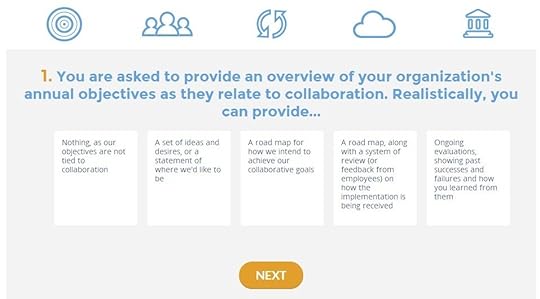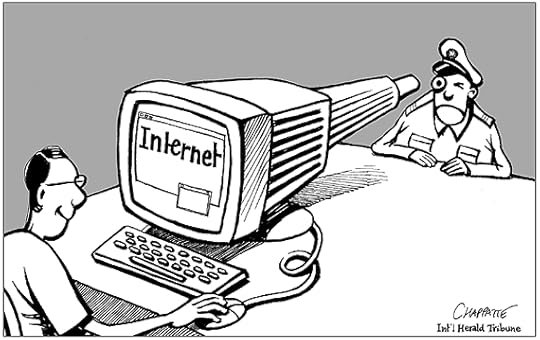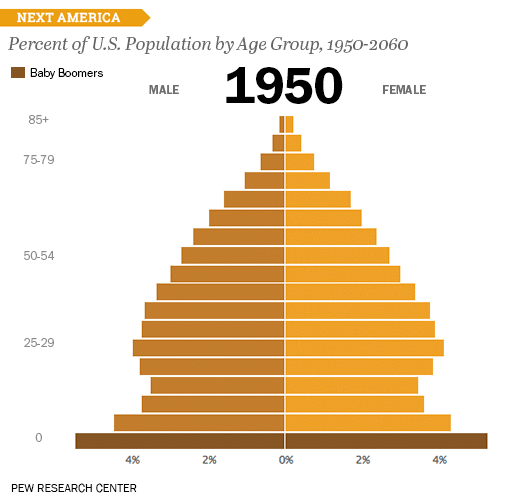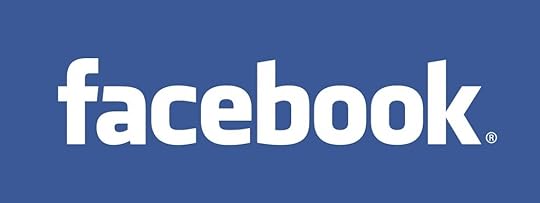Jacob Morgan's Blog, page 32
August 4, 2014
How Collaborative is Your Organization Really? Take This Test to Find Out!
Collaboration continues to be a top priority for many companies around the world and as we move towards a world where change and disruption happen at an increasing pace, collaboration becomes even more important. Still, saying you want to create a collaborative organization vs actually doing it are two different things. Two years ago I wrote, The Collaborative Organization, which is still just as relevant today as it was then.
When we launched the FOW Community a few weeks ago we also introduced a few public facing tools that anyone can access. One of these tools is a collaboration quotient test. This “test” allows anyone to answer a series of questions to see where their organization lies in a five stage collaboration maturity model (which was first introduced in my book). It’s a fun and easy way to get a sense of where you are currently and what you need to do to advance.
I find that most organizations are somewhere around “exploratory” or “defined” with a few organizations being more advanced. Take the collaboration test to see where you stand!
 Send to Kindle
Send to KindleThe post How Collaborative is Your Organization Really? Take This Test to Find Out! appeared first on The Future Workplace.





July 30, 2014
Privacy is Dead and We Killed it
Privacy…everyone keeps talking about it and apparently everyone is concerned with it, but does it matter? I recently watched the documentary, “Terms and Conditions may Apply,” which provides a fascinating look at how organizations such as Facebook, Google, Apple, and others have changed the way they look at and approach privacy. After watching the movie it had me wondering, “does privacy even matter anymore?”
Most of use Facebook, have iPhones, use Twitter, search on Google, and use the hundreds of other tools and platforms on the web. All of these companies have “terms and conditions” documents that pretty much none of us read. In effect everyone that uses these technologies has signed away their privacy yet we still see people saying that they want more privacy. What gives? I think we’ve clearly reached a point in today’s world where privacy is pretty much a lost cause. Our information is already out there and regardless of how hard we scream that we want it back or want it to be secure, it’s not going to happen…ever. If anything we are seeing a shift towards more openness, more transparency, and less privacy.
Most people (in my opinion) don’t event know what information they are giving up or to whom. For example, in their recent Privacy Index, EMC found that 51% of respondents were not willing to give up their personal information for a better experience (27% were), however, how many of these people realize that they are already doing this multiple times over every single day? In fact it’s safe to say that if you want privacy then you probably shouldn’t be using the internet. It doesn’t appear that businesses or governments are going to protect us either. I’m not quite sure how we got to this point, one minute I was filling out my profile to join Facebook and the next minute some company I’ve never heard of has hundreds of data points on me.
Are we too far over the line to head back to the other side? Is it even possible to do so?
I’ve just talked about social media data above but what about your health records, browsing habits, purchases, financial data, or employment information? Although some of these forms of data might be considered to be more secure than others many social media users are actually publicly sharing this information online on their Facebook pages, Twitter accounts, Instagram photos, Foursquare check-ins, Linkedin profiles, or anywhere else you can think of. So it’s not just the fact that companies have information about us that we don’t know they are collecting it’s about the fact that we are opting in to this lack of privacy and in many case go above that by actually purposefully sharing private information.
It seems like going forward we have two choices. We can either accept that privacy is dead and that we now live in an open world or we can challenge this notion and continue to fight for privacy. The second option seems to be a bit of a paradox though. We want more security and more privacy but at the same time we want:
our corporations to be more open and transparent
to use social technologies without we don’t want being able to see our information
to be able to buy and use free products and services without giving up anything in return
to opt into using things like Google and itunes without reading the terms and conditions agreements, assuming that they have our best interest in mind
What’s scary is that we’ve gotten to a point where many of the things we do and the tools we use are such a big part of our lives that we HAVE to use them today. Are you really going to delete your Facebook account, stop using Google, no longer buy products online, or ditch your iphone? No, you’re not because everyone else that you know on this planet is using those same things as well.
So is privacy dead? It sure seems that way, and we are the ones who killed it without even knowing it.
 Send to Kindle
Send to KindleThe post Privacy is Dead and We Killed it appeared first on The Future Workplace.





July 22, 2014
The Internet of Things is Coming to a Store Near You!
 If you recall, the internet of things is about connecting pretty much anything with an on and off switch whether it a car, a vacuum cleaner, a jet engine, or a toaster. The internet of things is clearly an important area for businesses but what about for the average consumer? Companies around the world such as Whirlpool, Samsung, and others are already creating smart appliances which allow anyone to walk into a store and buy a connected device.
If you recall, the internet of things is about connecting pretty much anything with an on and off switch whether it a car, a vacuum cleaner, a jet engine, or a toaster. The internet of things is clearly an important area for businesses but what about for the average consumer? Companies around the world such as Whirlpool, Samsung, and others are already creating smart appliances which allow anyone to walk into a store and buy a connected device.
Recently this got kicked up a notch as now both Home Depot and Lowe’s have launched their own kits to allow people to create smart homes with smart devices. Home Depot has something called “Wink” and looking at their list of supported products you will find everything from lights and irrigation controllers to locks and air conditioners. Wink was developed by Quirky, an invention company based in NYC. Lowe’s has their own product called Iris which also features a similar array of products that any consumer can purchase and then connect.
The internet of things is only going to get more mainstream from here and in the very near future you can expect to find devices and appliances of this kind at Target, Walgreen’s, Walmart, and pretty much any other major retail chain. As I’ve said many times, “anything that can be connected WILL be connected.” The ease of doing so increases every day until before you know it we will all be using connected devices and living in “smart homes.”
 Send to Kindle
Send to KindleThe post The Internet of Things is Coming to a Store Near You! appeared first on The Future Workplace.





July 17, 2014
Which Brands Will Disappear in 2015 and Why?
 The folks over at 24/7 Wall St. put together an interesting list of predictions around companies that are going to disappear in 2015. Their major criteria used for evaluation were:
The folks over at 24/7 Wall St. put together an interesting list of predictions around companies that are going to disappear in 2015. Their major criteria used for evaluation were:
Declining sales and losses;
Disclosures by the parent of the brand that it might go out of business;
Rising costs that are unlikely to be recouped through higher prices;
Companies that are sold;
Companies that go into bankruptcy;
Companies that have lost the great majority of their customers
Operations with withering market share.
Before reading the list below take a moment and think about which companies YOU think will go out of business next year, then you compare your answers with the ones below.
Here are the predictions from 24/7 Wall St. You will find the name of the company followed by “why” they are expected to disappear in 2015.
Lulumelon
Why?
Net income collapsed from $47 million to $19 million
Big issue around their pants being see-through
CEO Christine Day left the company
Founder and chairman stepped down
Stock down 50% from peak in June 2013
DirectTV
Why?
Likely acquisition by AT&T
Hillshire Brands (Ballpark Hotdogs & Jimmy Dean Sausages)
Why?
Acquisition by Tyson Foods
Zynga
Why?
Daily active users in Q1 2014 down 50% to 28 million
Lost $61 million in Q1
Stock down by 45%
Alaska Air
Why?
Potential acquisition by Delta
One of the few remaining independent airlines left
Russel Stover (third largest candy maker in America)
Why?
Rumored Hershey acquisition but could be someone else
Shutterfly
Why?
Attractive acquisition target
Shares down 18% over past 12 months
Modest 2.55 million customers in first quarter of 2014
Time Warner Cable
Why?
Comcast acquisition pending government approval
Blackberry
Why?
In 2008 had almost 20% of global smartphone market now below 1%
Bad sales of recent two new phones: Z10 and Q10
Revenue dropped $966 million in most recently reported quarter
Aeropostale
Why?
Revenue fell 12% in most recent quarter to $396 million
Same-store-sales down 13%
Losses increases from $12 million to $77 million
Stock price down 85% in last five years
Ended Q1 with only $24.5 million in cash, lowest since 2000
So there you have it, all of these companies are expected to disappear sometime next year and all of them have become known brands in their respective industries. Do you have any other companies you would add to the list, if so why?
 Send to Kindle
Send to KindleThe post Which Brands Will Disappear in 2015 and Why? appeared first on The Future Workplace.





July 14, 2014
Which Companies Dominate the “Internet of Things?”
The internet of things is still a very big area of discussion and exploration. The folks over at Appinions (an influencer marketing platform) put together an interesting list of companies that are having a huge impact on the internet of things industry. Based on their scoring system here is what they came up with.
The companies listed above cover pretty everything you can think of in the IOT space and offer products ranging from smart office equipment and wearable devices to smart home appliances and the ability to create smart automobiles. There’s also another area of the IOT which GE coined as “the industrial internet,” that is connectivity for machinery, manufacturing, robots, and the like. Those leading companies can be seen below:
The most interesting thing however is what people are discussing when they are mentioned the internet of things. Appinions put together a nifty little tag cloud for that as well. It should come as no surprise that words like privacy, data security, and big data, are among the most common themes.
I still believe that most people in the world have no idea what the internet of things is or what all of this connectivity means to them professionally or personally. I tried to explore this in an article I wrote for Forbes called “A Simple Explanation Of The Internet Of Things.” Appinions correctly identified that this is still a very volatile market (as is the wearable space) which is still going to see plenty of newcomers, acquisitions, and companies going bust.
You can see their full report here.
 Send to Kindle
Send to KindleThe post Which Companies Dominate the “Internet of Things?” appeared first on The Future Workplace.


 [image error]
[image error]
[image error]
July 7, 2014
America’s Changing Population
Recently the folks over at Pew Research released a very interesting report on The New America which explores how the American population is changing and what it might look like through 2060. According to Pew there are two big shifts we are seeing. “Our population is becoming majority non-white at the same time a record share is going gray.” Take a look at the animation below to see how our population is shifting from a pyramid to a rectangle.
The fact that our population is going to eventually become older and more diverse is a pretty significant trend that organizations need to be paying attention to. Today many people are retiring at a later age and in fact many are not even retiring in the traditional sense, instead they are becoming freelancers after their employee tenure is complete. Obviously it’s a bit tough to predict what the world is going to look like by 2060 (let alone what it will look like in the next 5 years), but I believe that we will see an ever growing reliance on the freelancer economy as a result of this (and other factors). Organizations will create their own internal freelancer environments focused on tasks and projects instead of long-term careers and people will have the ability to work for multiple companies at the same time or be a part of multiple tasks/projects within a single company.
 Send to Kindle
Send to KindleThe post America’s Changing Population appeared first on The Future Workplace.





July 2, 2014
A Valuable Lesson That Companies Can Learn From the USA vs Belgium World Cup Game
Overall the United States Soccer Team did pretty well in the World Cup surviving the group of death (which many thought we wouldn’t) and making it into the round of 16 where we lost to Belgium in what I would call a disappointing game. Time Howard did all he could saving shot after shot that Belgium took on goal. The U.S. team botched passes, had very little rhythm, botched a wide open shot on goal, and barely made use of any of their offensive players despite having a greater overall possession percentage than their opponents. It was only in the 30 minutes of overtime where the U.S. played like a true world cup team coming up with some amazing opportunities. But why did they wait until overtime to start playing? If they would have played with the same intensity and creativity during regulation time then they could have very well advanced to the quarter finals.
I see a lot of similarity with between how the U.S. team played and how many companies approach their future. It’s only when tragedy strikes and when disaster is immanent that action is taken. Sometimes this approach works but oftentimes it does not. The moral of the story is don’t wait until it’s too late before you take action. There are only so many shots on goal (i.e challenges and obstacles) that a team or a company can take before it becomes a losing battle. Better to play your best right from the start, for companies around the world today this means taking action now.
 Send to Kindle
Send to KindleThe post A Valuable Lesson That Companies Can Learn From the USA vs Belgium World Cup Game appeared first on The Future Workplace.





June 26, 2014
Should Facebook Get Into the Employee Collaboration Space?
An article in Techcrunch yesterday says that Facebook may be working on using their platform for internal collaboration. The article isn’t conclusive in any way and doesn’t speculate as to whether any type of new product is being worked on or if the chatter is about simply using Facebook for collaboration purposes. I remember hearing something about Linkedin getting involved in the collaboration space as well, but that’s another topic. So does it make sense for Facebook to get involved in the enterprise collaboration space? I think an argument can be made for either side.
Why yes
From a simple profitability standpoint Facebook gets to double-dip into it’s user-base which is now well over 1 billion people, a significant portion of the world’s population. Today’s Facebook user includes everyone from the teenager to the company executive and the revenue is mainly generated from ads (around $2.4 billion annually from ads and $240 million annually games and apps) . By getting into the collaboration space Facebook can now generate revenue from these same people in more than one way. The young professional who plays Facebook games or downloads apps then goes to work where his/her company has thousands of annual seats for the business version of Facebook.
The features and functionality of Facebook are also quite robust, heck their graph search is probably better than what most enterprises use for their own internal search today. It’s not hard to see how a few minor tweaks to the UI or a few business-specific features can make Facebook into a formidable player in the collaboration space, after-all, many collaboration vendors today modeled their UI and functionality after Facebook to begin with. Their user list can easily rival any type of active directory within most companies around the world today. Their API and development tools can also make it extremely easy for any company to deploy all sorts of customization to their own deployments. I’m sure they also have an extremely powerful set of analytics tools and a content recommendation engine that can make collaboration much more easy, efficient, and likely to happen within organizations.
Let’s also not forget that Facebook has the resources (money and people), partnerships, existing clients, brand name, and relationships needed to make a serious dent in the collaboration space. If you ask the average person if they know who Jive, Yammer, or Chatter are, you will most likely get a “no.” You’d be hard pressed to find someone that hasn’t heard of Facebook. The collaboration space is also very ripe for a new disruptive player to come in especially since innovation appears to have tapered off (for now) and has instead been replaced by aggressive sales and marketing.
Why no
Who in their right might would want to ever have their personal Facebook account associated in any way shape or form with their business profile? The personal information just BEGS for some kind of security or privacy issue to come knock Facebook in the teeth. It would be a bit tricky to have these two exist in complete isolation with no overlap. Facebook’s brand is also all about personal communication and interaction so it really has no credibility or association in the collaboration space. If anything, Linkedin has much more of a shot at succeeding in this type of a place since most people already associate it as being the business network, but it’s not worth the risk for Facebook. Instead they should just focus on their core strengths of dominating the world one new user at a time.
Although Facebook does have a great set of tools and existing features it’s still miles away from what an enterprise would need it terms of true collaborative capabilities (not to mention security). Sure you can have groups, status updates, chats, and those types of things. But what about project or task management, sharing and editing files, integration with business tools, and gamification?
Facebook is also quite late to the party with many established vendors in the space such as IBM, Microsoft, Yammer, Jive, Chatter, and several others. These companies are already working with many of the largest and most forward thinking companies. They already spent money on the technologies, have lots of data uploaded, and their employees are used to it; there’s no way they would all of a sudden make the switch (unless Facebook for business was free?). Let’s also be honest, Facebook doesn’t have the greatest reputation when it comes to privacy so trust would be a huge issue here as well.
Conclusion
Obviously only Facebook knows what it plans to do but as I mentioned above I can certainly see a case for either approach here. In fact when looking at the features, functionality, and UI, Facebook is truly not that far off from what can be a great collaboration platform but there are just as many risks/cons as there are benefits/pros. At this point everything is just speculation but it’s interesting to at least think of what the possibilities are. In fact I’m sure much more can be written about the “yes” and “no” side for Facebook getting into (or not) the collaboration space. If they do make a move though I suspect it won’t be that long before they do. There are still plenty of companies in the world today who are looking to make investments around connecting their people and information or those who have already made the investments that are not quite satisfied with their deployments.
What do you think? Does Facebook have a play here and if so would you or your company use Facebook for business? What did I miss?
 Send to Kindle
Send to KindleThe post Should Facebook Get Into the Employee Collaboration Space? appeared first on The Future Workplace.





June 19, 2014
What Does the Future of Work Look Like?
A few weeks ago I flew to NYC to film a video on the future of work with the folks over at Success Factors. The video was recently debuted at SAP’s Sapphire conference in Orlando. It explores a lot of the themes and ideas that I care about such as employee engagement, workplace flexibility, the internet of things, and the importance of shifting from focusing on profits to prosperity. It was actually quite a production with full film crew, actors, and lot of cool editing and special effects. It was a very fun project and I was quite happy with the final video, check it out and let me know what you think. It does a great job of helping paint a picture of the future of work.
 Send to Kindle
Send to KindleThe post What Does the Future of Work Look Like? appeared first on The Future Workplace.





June 17, 2014
The FOW Community is Now Live!

I’m very excited to announce that today we officially launched the FOW Community. If you recall, the FOW Community is a completely custom invite only membership community that we (Chess Media Group) created in order to allow companies from around the world to connect with each other around themes and topics related to the future of work and collaboration. Members will also be able to access resources such as case studies and whitepapers. Connie and I will also be active participants in the community where we will share advice and provide help where we can.
I introduced the community here around a month ago (read this if you are just hearing about it) and since then we have been finalizing a few bugs, speaking with some potential members, and basically getting our “house in order.” The website which used to be a landing page is now a fully interactive site along with a collaboration quotient test, a maturity model, and a few other things. Visitors can also take a sneak peek at some of the content within the community itself. Of course, if you decide to join you will have to request an invitation.
We are very excited to launch something that we have been planning for over the past two years and actually developing for the past 14+ months. The FOW Community is going to be completely shaped by members including the actual features of the community itself (since we built it we can change it based on member feedback) as well as the type of content that is created. We are very excited to learn and grow along with the members and feel that we have created something truly unique and absolutely beautiful! Nothing like the FOW Community exists anywhere else (that I am aware of at least). This marks a starting point in a large idea and vision that we are moving towards around the future of work and collaboration. More ideas on where we are taking this and what our plans are will be revealed in due time!
For now take a look at the FOW Community, even if you don’t end up joining you will still find plenty of useful and valuable content there that you can access and play around with.
So for now, welcome!
 Send to Kindle
Send to KindleThe post The FOW Community is Now Live! appeared first on The Future Workplace.












